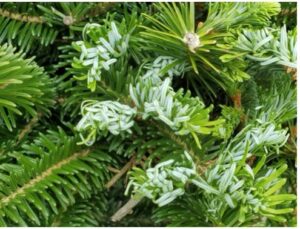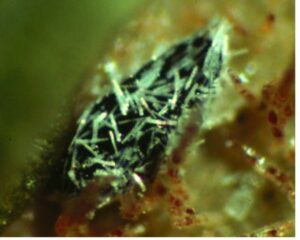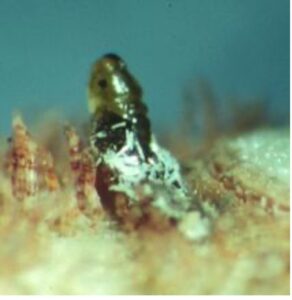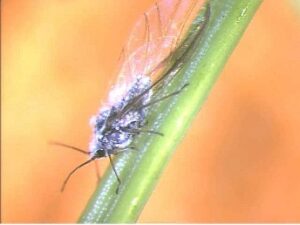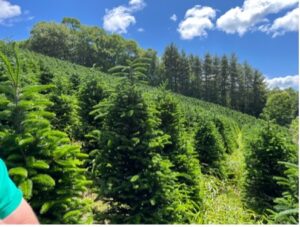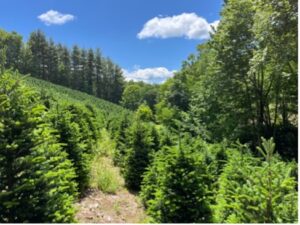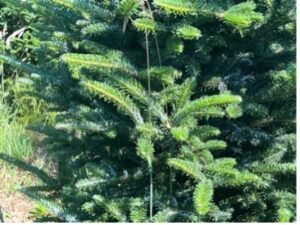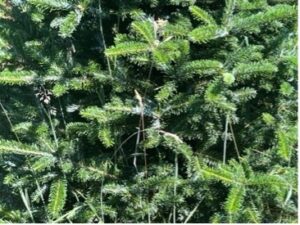2024 Balsam Twig Aphid Farm Demonstration (Bill Beuttell’s Farm)
go.ncsu.edu/readext?1014198
en Español / em Português
El inglés es el idioma de control de esta página. En la medida en que haya algún conflicto entre la traducción al inglés y la traducción, el inglés prevalece.
Al hacer clic en el enlace de traducción se activa un servicio de traducción gratuito para convertir la página al español. Al igual que con cualquier traducción por Internet, la conversión no es sensible al contexto y puede que no traduzca el texto en su significado original. NC State Extension no garantiza la exactitud del texto traducido. Por favor, tenga en cuenta que algunas aplicaciones y/o servicios pueden no funcionar como se espera cuando se traducen.
Português
Inglês é o idioma de controle desta página. Na medida que haja algum conflito entre o texto original em Inglês e a tradução, o Inglês prevalece.
Ao clicar no link de tradução, um serviço gratuito de tradução será ativado para converter a página para o Português. Como em qualquer tradução pela internet, a conversão não é sensivel ao contexto e pode não ocorrer a tradução para o significado orginal. O serviço de Extensão da Carolina do Norte (NC State Extension) não garante a exatidão do texto traduzido. Por favor, observe que algumas funções ou serviços podem não funcionar como esperado após a tradução.
English
English is the controlling language of this page. To the extent there is any conflict between the English text and the translation, English controls.
Clicking on the translation link activates a free translation service to convert the page to Spanish. As with any Internet translation, the conversion is not context-sensitive and may not translate the text to its original meaning. NC State Extension does not guarantee the accuracy of the translated text. Please note that some applications and/or services may not function as expected when translated.
Collapse ▲2024 Balsam Twig Aphid Farm Demonstration at Bill Beuttell’s Farm
The balsam twig aphid (BTA) (Mindarus abietinus) is a small, pale green aphid that feeds on fir trees in the spring. Their feeding on Christmas trees in western North Carolina often results in permanently curled needles, which reduce the tree’s grade, quality, and value. Trees badly damaged may have to remain in the field for an additional year or more so that good, undamaged growth will cover up the damaged needles. Sooty mold, a black fungus that lives on the honeydew excreted by aphids and other pests, can also further affect the tree’s appearance, lasting on foliage and the tree’s trunk and stems into fall and harvest.
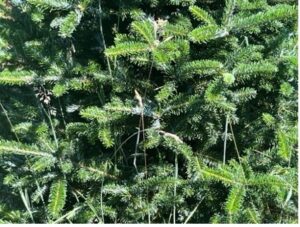
Figure 2: BTA Damage with Sooty Mold, spring 2024 Source: J. Moody
Since the BTA is native to western North Carolina, it is widespread and well-adapted to the area. It can attack any species of true firs. Therefore, in the year of sale and the year before the sale, all Christmas tree growers must evaluate their trees to determine if they need to control this pest.
The BTA has an unusual lifecycle, different from any of the other pests of Fraser fir. Three distinct adult forms are produced one after another. Each has a role in the lifecycle, and each must be produced in succession for the lifecycle to be complete. Each adult form is preceded by the smaller immatures, which grow and molt to the adult. The first form, the stem mother, increases aphid numbers. The second form is winged, allowing the aphid to spread to other areas. The final form produces the overwintering egg.
The Egg
The aphid both “oversummers” and overwinters as a small, black, tear-dropped shaped egg with white waxy rods covering it. Eggs can be found anywhere on the tree but are most common on the most current growth — last year’s shoots. These eggs begin to hatch in the spring from early March through mid-April. When twig aphids start to hatch and how quickly they develop depends on the spring weather, which hatch earlier during warmer springs.
The Stem Mother
The aphids that hatch from the eggs are all female and are called stem mothers. Each aphid molts three times, becoming a little larger with each successive molt. These stem mothers produce live aphids, which are all clones that are genetically identical to the mother. Each stem mother can produce as many as 70 live young. This allows a quick buildup of the population. Usually, this occurs just prior to or just as the buds start to grow. The adult stem mother and her offspring are easy to find, often feeding on the buds as they start to break.
The Winged Form
The young aphids that the stem mother produces also go through three molts. At maturity, some of them will be like the stem mother, allowing for a further buildup of the population. However, the stem mother’s offspring will be different at some point, having wings at maturity. These are also all female and also have live young. Though this stage has wings, they are not as useful to the aphid as the wings of a fly or bee. They are only strong enough to lift the aphid away from the tree for the wind to blow it to another location. The winged stage is found in May and June in western North Carolina.
Completing the Life Cycle
The young that the winged form produces also go through three molts to become an adult. These adults are either male or female. This is the only time males are produced in the lifecycle of any given year. Following mating, the females lay one or two overwintering eggs. Eggs are first found in western North Carolina at the end of May and June. All twig aphids have died off by the end of June.
In the spring of 2024, one of our growers, Bill Beuttell of Daintry Trees, was interested in comparing oils and other products to observe how effectively these alternative treatments would manage the BTA populations.
Each of his locations was scouted, and BTA eggs were found. Bill chose to use Stylet-Oil (1%) and Sniper (13 oz/ acre), Dormant oil (1%) and Sniper(13 oz/acre), and M-Pede (1%) and Dormant oil (1%).
This year(2024), the hatch started in March and was complete by the first week of April. With all the rain and inclement weather, it was very difficult to find a day without precipitation before or after the BTA application. The potential of using these products is that they are generally low toxicity(except for Sniper), and the application window can include spraying in February or March prior to the BTA hatch.
The fields were at least 4 feet tall up to market size trees. Each treatment was applied with an ample water carrier of approximately 250-300 GPA. The treatment dates were:
Treatment BTA Hatch Date Result
Treatment 1
Stylet Oil(1%) and 0% February 29, 2024 Failure
Sniper(13 oz/acre) 0% March 2, 2024 Failure
Treatment 2
Dormant Oil(1%) and Less 1% March 4, 2024 Failure
Sniper(13 oz/acre)
Treatment 3
Dormant Oil (1%) and 100% April 1, 2024 Success
M-Pede (1%) 100% April 2, 2024 Success
Out of all the treatments implemented, the ones that worked well were the M-pede and Dormant oil, both at 1%. In other words, one gallon of product in 100 gallons for each.
These materials were applied in March at all of the sites. The observation was that there was no damage on the M-Pede and Dormant oil, but all other applications failed.
The Dormant oil must be well agitated to be kept in solution. Even with direct agitation, a section of spray at the very end of the tank had a higher oil concentration than the initial part of the spray solution. The needles appeared very oily after the application. Luckily, the application did not damage the trees. However, the M-pede and Dormant oil mixture stayed in the solution better, and there was no sheen on the last few trees to which the mix was applied.
Future Plans
In 2025, we plan to follow up on this trial with some more trials, concentrate with M-Pede and Dormant Oil, both at 1% solution, and apply the test in February, March, and April of 2025.
For additional information, and if you need any help scouting please contact Jerry Moody, County Extension Director, at 828-733-8270.




